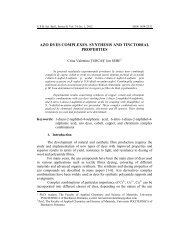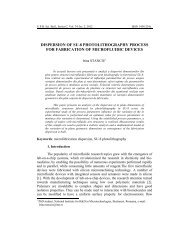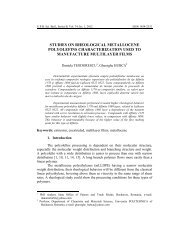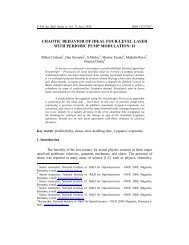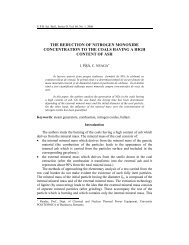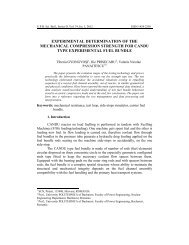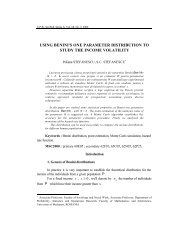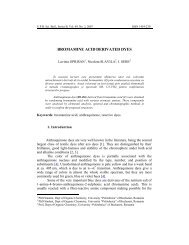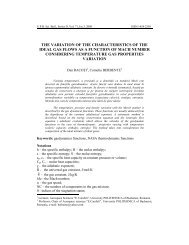poly bis-gma/ha based hybrid composite materials - Scientific Bulletin
poly bis-gma/ha based hybrid composite materials - Scientific Bulletin
poly bis-gma/ha based hybrid composite materials - Scientific Bulletin
Create successful ePaper yourself
Turn your PDF publications into a flip-book with our unique Google optimized e-Paper software.
80 Maria Ficai, Ecaterina Andronescu, Anton Ficai, Georgeta Voicu, Bogdan Ştefan Vasile<br />
Fig. 4. SEM images of <strong>poly</strong> Bis-GMA/HA <strong>composite</strong> material obtained by thermal <strong>poly</strong>merisation<br />
at 70 0 C<br />
3.4. Transmission electron microscopy<br />
TEM and HRTEM images were recorded in order to obtain higher<br />
magnification and to study the morphology of the agglomerates. Based on the<br />
TEM images, it can be seen t<strong>ha</strong>t the agglomerates are composed mainly by<br />
spherical, quasispherical and rod like particles. The rod like morphology is<br />
induced by the <strong>poly</strong>mer, due to the presence of –C6H4–CH2–C6H4– groups. TEM<br />
images are also a useful tool to determine the particles size. Based on the average<br />
size determined by SEM, the <strong>composite</strong> material can be considered as a true<br />
<strong>hybrid</strong> nano<strong>composite</strong>. At high resolution, the main crystallization planes of<br />
hydroxyapatite can be identified, for instance [210] and [211].



